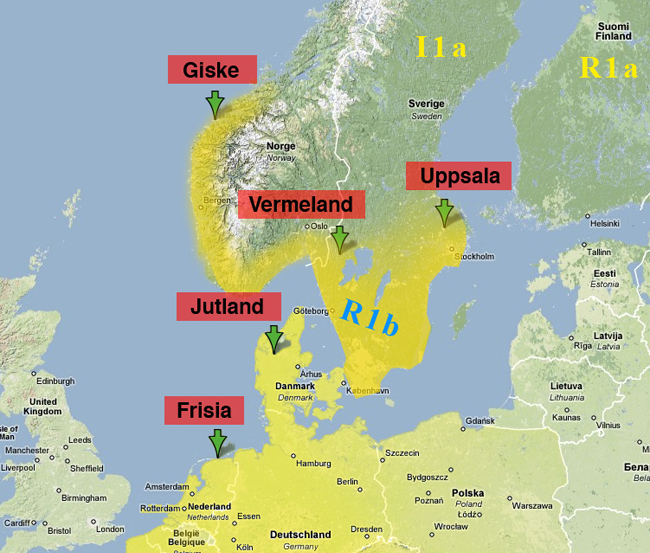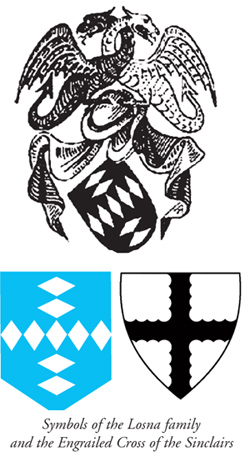Family Stories - Our Norse Heritage
The first traces of human life in Norway, based on archeological finds, were approximately 9,000-10,500 years ago. (I believe 8,000 BCE is closer to the accepted retreat of the LGM.) Before the Black Death in 1349, the population for Norway was estimated to be about 300,000. 15 There is much debate regarding the origins of these early settlers. Some have suggested they were related to the Mongols, at least in the case of the Finnish. Others have suggested they came up from Central Siberia.
One of our most notorious and beloved ancestors is Rollo. This from Wikipedia, who have a good habit of marking questionable research: “Rollo was a Viking leader of contested origin. Dudo of St. Quentin, in his De moribus et actis primorum Normannorum ducum (Latin), tells of a powerful Danish nobleman at loggerheads with the king of Denmark, who then died and left his two sons, Gurim and Rollo, leaving Rollo to be expelled and Gurim killed. William of Jumièges also mentions Rollo's prehistory in his Gesta Normannorum Ducum however he states that he was from the Danish town of Fakse. Wace, writing some 300 years after the event in his Roman de Rou, also mentions the two brothers (as Rou and Garin), as does the Orkneyinga Saga.
Norwegian and Icelandic historians identified this Rollo with a son of Rognvald Eysteinsson, Earl of Møre, in Western Norway, based on medieval Norwegian and Icelandic sagas that mention a Ganger Hrolf (Hrolf, the Walker). The oldest source of this version is the Latin Historia Norvegiae, written in Norway at the end of the 12th century. This Hrolf fell foul of the Norwegian king Harald Fairhair, and became a Jarl in Iceland. The nickname of that character came from being so big that no horse could carry him.
The question of Rollo's Danish or Norwegian origins was a matter of heated dispute between Norwegian and Danish historians of the 19th and early 20th century, particularly in the run-up to Normandy's 1000-year-anniversary in 1911. Today, historians still disagree on this question, but most would now agree that a certain conclusion can never be reached.” (Wikipedia search – Rollo)
A chart sent me by Niven Sinclair many years ago shows the line of Rollo going back to King Fornjot of finland & Kvenland c. 600 AD. His line, leading to Rollo includes Rognvald ‘the Mighty’ 871-890 AD.
Another researcher who is well known to some of the Sinclair family, Professor Hugh Montgomery, has written several books (see “Book Review” link) regarding what he calls the Ulvungar Dynasty, the Davidic & Elchasaic Lines and the Odonic Lines. Hugh places Rollo as a descendant of the Ulvungar (Ynglingeaett or Yngling). In particular, he ascribes Rollo to the line of one Harald Hylthetan (Herioldus Brocus), whose immediate sons (Rollo’s g-grandfathers) were Godfrid, King of Denmark 804-810 and Halfdan, King of Denmark 810-812 122, p 84 This certainly points out the truth of the two lands – they were related by much more than geographic proximity.
Geography
of our Norse Ancestors & the DNA Proofs
Speaking of geography, let us examine the geography of our Norse
ancestors in relation to what we know of the DNA footprint of
Scandinavia. The most ancient known ancestor of Rollo is Olaf
Ingialdsson. He is the 5th Great Grandfather of Rollo and was living in
Varmland, Sweden in 682 AD. He died in 710. He was King of Vestfold
& Jutland. He founded a colony in Vermeland, Norway after being
expelled from Sweden. Vermeland, Sweden is on the western side of
Sweden, just on the border of Norway. Jutland, of course, is in
Northern Denmark. By the way, the ancestry of Rollo is greatly disputed.

The distribution of the R1b haplogroup (AMH) matches up nicely with the
known locations of Rollo and his ancestors. Thus, our DNA is consistent
with the story of our family's descent from Rollo.
If you’ll study the section called “Early Path
Through
Time,” you’ll see that our R1b haplogroup is proof
that,
with few exceptions, none of us are of the classic northern Viking
stock. That, in my opinion, makes us no less Viking. Our ancestors
arrived there (without any doubt) from the Germanic tribes of Western
Europe, not from the north like the classic I1, N and Q Norse
haplogroups.
The
Losna Connection as Proof of Norse Links
In 2007, Niven and Chirs Maile sought
to test Ove
and Kare Losnegard because (1) their family crest has the engrailed
cross prominently displayed and (2) family histories indicated a link
to the Sinclairs. We do indeed connect to Ove and Kare. Steve is
connecting to them on 22 of 25 markers (2 black - 1 red). Stan matches
21 of 25 markers (2 black- 2 red). And several other members are
showing historically relevant DNA connections.
Symbols cannot be ignored. They had great meaning and importance in
ancient times and, indeed, have great importance even now. Note the
cross on their shield from the 1400s. 60
 The
very first verified member of the noble Norwegian Losna family is
Erlend of Odensland who was born around the year of 1240 AD. He lived
most of his life on his family estate of Odensland in the community of
Kyrkjeboe in Western part of Norway. He was married, but his
wife’s name is not known. It is, however, known that one of
his
sons was Fillipus Erlendson, whose name is mentioned in Diplomatorium
Norvegicum 1322 and 1338. 60
The
very first verified member of the noble Norwegian Losna family is
Erlend of Odensland who was born around the year of 1240 AD. He lived
most of his life on his family estate of Odensland in the community of
Kyrkjeboe in Western part of Norway. He was married, but his
wife’s name is not known. It is, however, known that one of
his
sons was Fillipus Erlendson, whose name is mentioned in Diplomatorium
Norvegicum 1322 and 1338. 60
Although the Losna family is assumed to be much older, Erlend is the first member whose first name is documented, and according to normal practice in the country at this time, no common family name was used. Various members of the family were named after their fathers, i.e. as "son of", or "daugther of" a person. This is expressed in the Nordic languages by adding "son", or "datter" to the first name of a father. Thus, Fillipus, son of Erlend, was called Fillipus Erlendson. However, the name of Losna, originally being the name of an island in the West Norwegian county of Sulen, and later, describing the large property belonging to the family, gained increasing importance from the second half of the 13th century.
Although “Losna” originally was the name of a rather small island, it became descriptive of major properties belonging to the family in various parts of Norway, including large holdings in Bergen and surroundings, and in the county of Troms in the arctic part of Norway. Clearly, at the end of the 13th century, the wealth and power of the LOSNA family was among the most important in Norway. It seems also clear, that the family at some earlier stages had major properties on the Orkney-islands, and that there were at least some blood relations between the Losna family in Norway and the family of the Earl of Saint Claire (Sinclair) on the Orkney-islands. The most important clue for this assumption is that the old Losna "Escutcheon" (Code of arms) showing a cross built up by 9 rhombi is identical to that belonging to the Saint-Claire family. It may also be of interests to note that the rather "non-Nordic" name Fillipus, which was used for several members of the Losna family, was so common in the Saint-Claire family, that a co-incidence can hardly be the case. Interestingly, the Earl of Orkney-island, Wilhelm Sinclair, was one of four to candidate for the vacant Norwegian throne on a meeting in Hamar, Norway, 25 October 1449.
For several centuries the Losna
family played a
very important political role in Norway, and this was especially the
case during the 14th and 15th century. Several members of the family
were selected for a number of highly influential positions such as
ministers or special advisors to the Government. Members of the Losna
family were also appointed judges in the High Court, or, military
commanders in charge of castles and garrisons responsible for the
defence of major cities such as Oslo, Bergen, or Tonsberg. 61
William the Conqueror | The Earldom Lineage | Jarl Henry St. Clair | Our Norse Heritage
Home | Contact | Join Google Discussion Group
